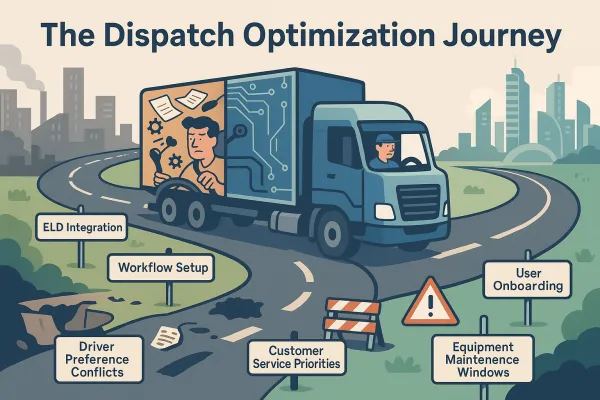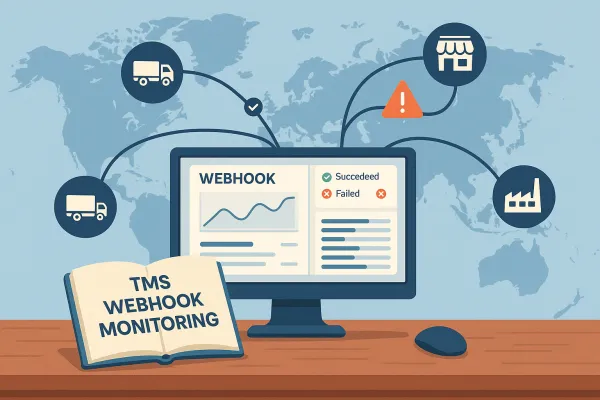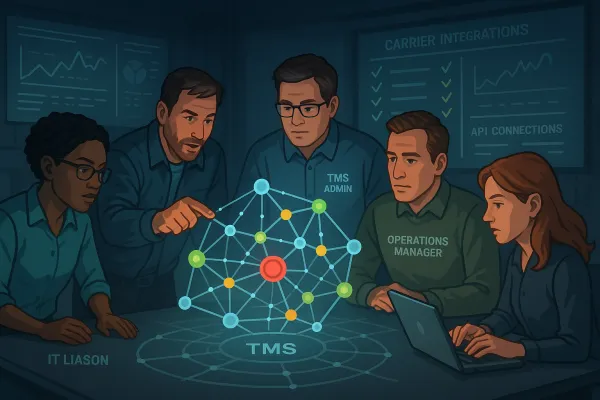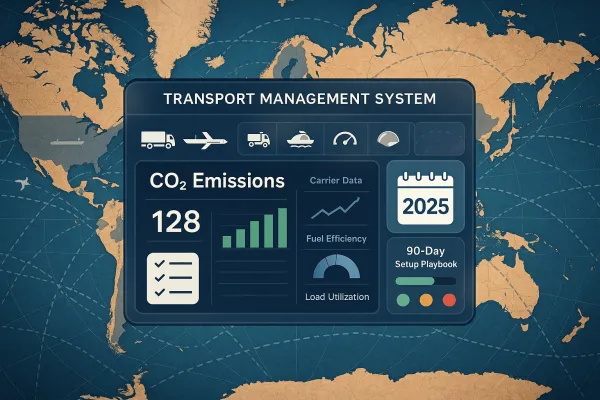TMS Disaster Recovery: The 4-Hour Response Plan for API Failures and Carrier Outages
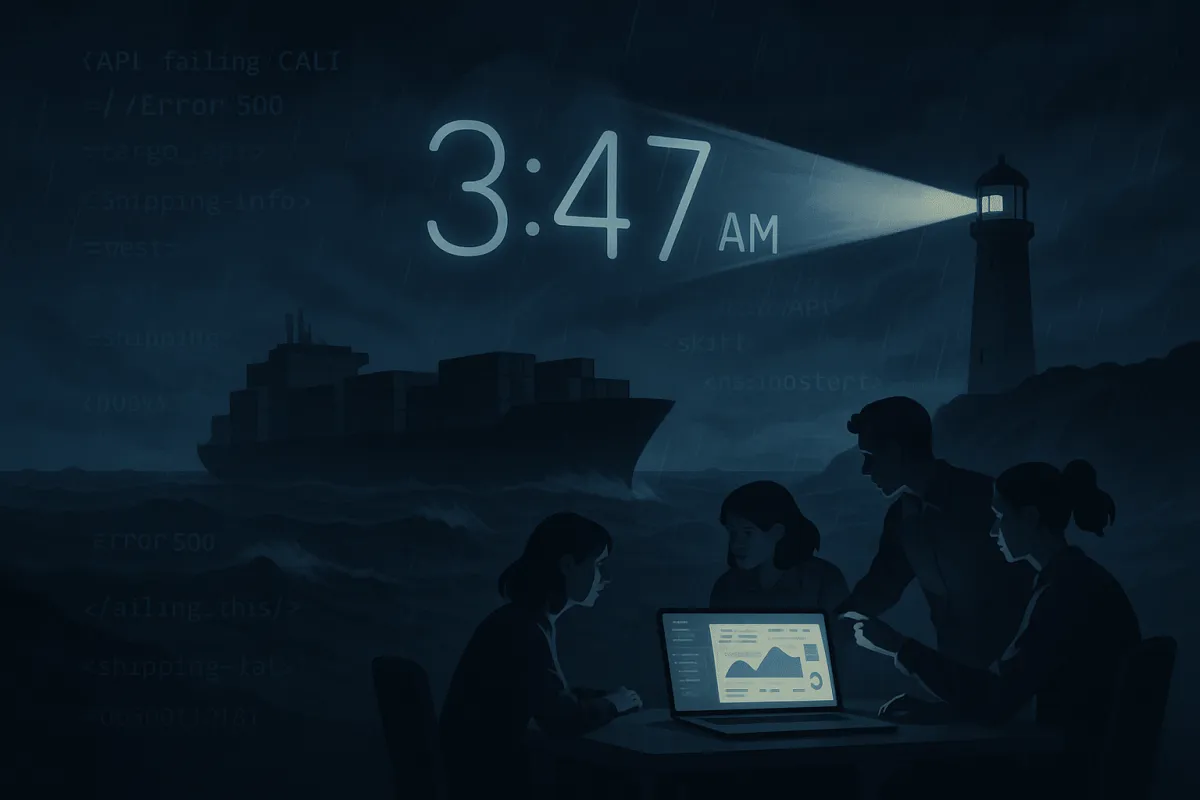
Your carrier APIs failed at 3:47 AM. Customer orders are backing up. Your team is scrambling to figure out what went wrong and how to get shipping labels printing again. Sound familiar?
In 2024 alone, 153 carrier outages occurred, yet most TMS disaster recovery plans still amount to "hope it doesn't happen" and "call the vendor." That approach costs you sales, frustrates customers, and burns out your operations team.
This guide walks through building a TMS disaster recovery plan that handles both the predictable failures (API rate limits, planned maintenance) and the curve balls (sudden carrier outages, webhook backlogs). You'll get specific response protocols, configurations that actually work, and a 4-hour recovery framework that keeps your shipping operations running when everything else goes sideways.
The Reality Check: When Your TMS Goes Dark
Let's start with what actually breaks. Carriers like UPS, USPS and FedEx are not immune to issues or the need for maintenance. During an outage, no one can access rates from a carrier. But outages aren't your only problem.
API rate limiting has become the silent killer of smooth operations. API Rate Limiting is critical for managing traffic, protecting resources, and ensuring stable performance. When you hit those limits, your TMS can't calculate rates, generate labels, or track shipments.
Common failure patterns include:
- HTTP 429 errors from carrier rate limiting during peak seasons
- Webhook backlog failures during system updates
- Credential expiry causing authentication failures
- Planned maintenance windows that extend longer than expected
Typically, carriers will let you know about these planned outages ahead of time so you can prepare. The problem? Most teams treat these notices like email newsletters - they glance at them and forget to act.
Your TMS platform matters too. Whether you're running MercuryGate, Descartes, Cargoson, or BluJay, each has its own vulnerability patterns. Understanding these helps you build more targeted recovery protocols.
Building Your 4-Hour Recovery Framework
Four hours. That's your window before delayed shipments start impacting customer satisfaction and your bottom line. This timeframe gives you enough room to assess, respond, and implement fallback solutions without rushing into mistakes.
Your framework needs three components: detection triggers, escalation thresholds, and decision trees. Detection starts with error rate monitoring. When you see a 5% error rate across carrier API calls, that's your yellow alert. At 15%, you're in red zone territory requiring immediate action.
Response time monitoring matters equally. Handling rate limit errors effectively involves returning clear and informative error messages, such as an HTTP 429 status code, along with a Retry-After header that indicates when the user can try again. When your typical 200ms API response time jumps to 2 seconds consistently, something's wrong.
Document everything during incidents. You need timestamps, error messages, affected carriers, and mitigation steps taken. This becomes your playbook for similar future incidents. Teams that skip documentation repeat the same 3 AM scrambles every few months.
Pre-Built Response Protocols for Common Scenarios
API Rate Limiting Scenarios
Analyze peak usage times, request frequency, and growth trends to set appropriate limits. Choose the Right Algorithm: Use algorithms like Fixed Window, Sliding Window, Token Bucket, or Leaky Bucket based on your API's needs.
When you encounter HTTP 429 errors, your first step is checking the Retry-After header. This tells you exactly when you can try again. Don't ignore it - some teams hammer the API harder when they get rate limited, making the situation worse.
Set up your TMS to automatically back off when it encounters rate limits. A simple exponential backoff starts with a 1-second delay, then 2, 4, 8 seconds, and so on. Your exponential backoffs can start by doubling the waiting period for every failed attempt. But if that proves insufficient, you can use more aggressive increments for the delay period.
For webhook integrations with Slack or Microsoft Teams, implement circuit breakers. When your webhook fails 3 consecutive times, pause for 5 minutes before retrying. This prevents cascade failures across your notification systems.
Cargoson handles rate limiting gracefully with built-in retry logic, but you still need monitoring. The same applies to integrations with nShift, ShipStation, and Sendcloud - each has different rate limiting behaviors you need to understand.
Carrier API Outages
Planned maintenance usually happens during low-traffic windows, but "low-traffic" depends on your business. If you ship globally, there's no truly quiet time. Most frequently, API maintenance occurs at times the system is used minimally, such as overnight.
When your primary carrier goes dark, you need backup rate configurations already loaded in your TMS. Don't wait until the outage to start setting up UPS as a FedEx backup. Load those configurations during quiet periods and test them monthly.
For labels that won't generate, have paper backup procedures ready. Yes, it's 2024, but sometimes you need to print shipping labels manually and enter tracking numbers later. Document the process before you need it.
Your Emergency Toolbox: Configurations That Actually Work
Rate limiting configurations start with understanding your traffic patterns. Regularly review your API call frequency to ensure your rate limits are aligned with actual usage patterns. This helps you set limits that are neither too restrictive nor too lenient.
A good baseline is 20 requests per second with a burst allowance of 50 requests. This steady rate handles normal operations while accommodating peak periods. Use the leaky bucket approach - requests flow out at a consistent rate regardless of input volume.
Alternative carrier setups require specific configurations in your TMS platform. In MercuryGate, you'll set up carrier profiles with different priority levels. Transporeon handles this through routing rules. Oracle Transportation Management uses carrier selection algorithms. Cargoson provides multi-carrier failover configurations that switch automatically based on predefined criteria.
Manual override procedures need clear triggers and authority levels. Operations supervisors should be able to bypass normal routing for emergency shipments. But document every override - you need to understand why normal processes failed.
The 15-Minute Triage Process
When alerts start firing, you have 15 minutes to assess the situation and decide on your response. Here's your step-by-step process:
First 5 minutes: Check system status pages for your carriers and TMS provider. ShipStation's status page shows real-time issues. UPS publishes their API status. FedEx has similar monitoring.
Minutes 5-10: Verify the scope. Is this affecting all carriers or just one? All shipment types or specific services? Check your error logs for patterns. Are you seeing consistent HTTP 429 responses or random timeouts?
Minutes 10-15: Make your go/no-go decision. If it's a single carrier issue and you have backup options configured, switch carriers. If multiple carriers are affected, implement manual processes for critical shipments only.
Communication templates save precious time. Pre-write messages for your team, customers, and management. "We're experiencing shipping system delays due to carrier API issues. Order processing continues normally, but some shipping confirmations may be delayed 2-4 hours."
Escalation triggers depend on business impact. If more than 25% of your daily shipment volume is affected, escalate to management immediately. If the issue extends beyond 2 hours, activate your manual shipping procedures.
Testing Your Plan: The Quarterly Fire Drill
Testing disaster recovery plans feels like extra work until you need them. Schedule quarterly tests during low-impact periods. Pick a Tuesday at 10 AM when shipping volume is predictable.
Never test rate limiting against production APIs. Rate limits don't just vary from application to application; they can also vary based on the endpoints you're interested in, whether your requests are authenticated or not, the subscription you're on, etc. Use staging environments or carrier test APIs.
Controlled failure scenarios include simulating single carrier outages, webhook failures, and credential expiry. Document response times: how long did it take to detect the issue, make decisions, and implement fallbacks?
Track recovery metrics: time to detection, time to mitigation, and data integrity post-recovery. Good targets are 5 minutes to detect, 15 minutes to mitigate, and zero data loss. If you're not hitting these numbers, your procedures need work.
Update your documentation after each test. What worked? What didn't? What new scenarios did you discover? Teams that test but don't update their procedures are just practicing ineffective responses.
Building Resilience Into Daily Operations
Multi-carrier shipping strategies require more than just backup configurations. Leveraging a multi-carrier shipping solution ensures your business keeps moving when they happen. Thanks to Shippo's API, you quickly switch to another carrier offering similar delivery windows and rates, ensuring your customers' orders arrive on time without additional cost.
Monitor both historical patterns and real-time metrics. Historical data shows you seasonal trends and capacity planning needs. Real-time monitoring catches problems before they cascade into outages.
Team roles and permissions matter during emergencies. Operations managers need carrier switching authority. IT admins need API credential access. Shipping supervisors need manual override permissions. Define these roles clearly and test them regularly.
Long-term improvements come from incident learning. After each outage or rate limiting event, conduct a brief retrospective. What early warning signs did you miss? Which communication channels worked? What configurations need adjustment?
As we progress further into 2025, managing API rate limits has become essential for maintaining secure and efficient systems. These advancements highlight how adaptive strategies are essential as APIs handle greater traffic and security challenges in 2025.
Your disaster recovery plan isn't a document you write once and forget. It's a living playbook that evolves with your operations, your technology stack, and the ever-changing landscape of carrier APIs and TMS platforms. The teams that invest in building and testing these capabilities don't just survive the 3 AM crisis calls - they turn potential disasters into minor operational hiccups that customers never even notice.


